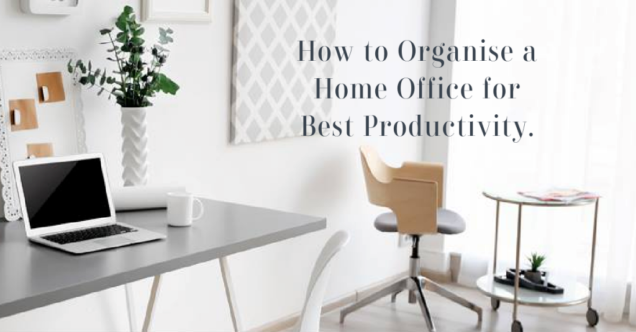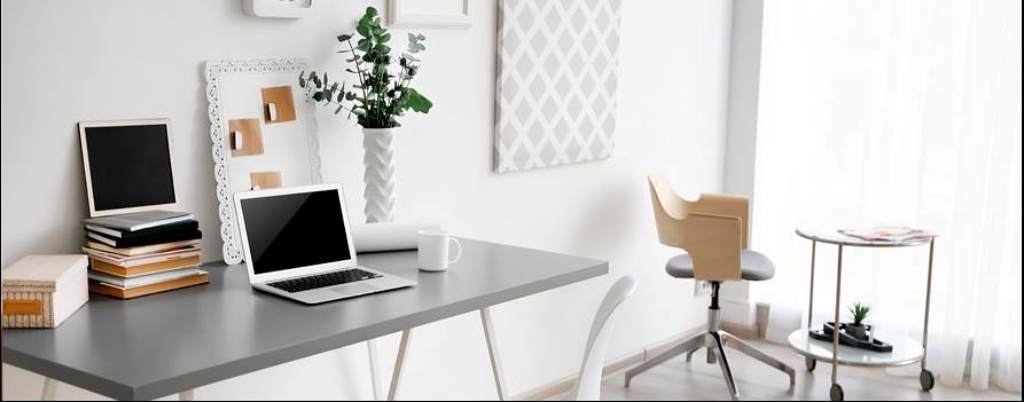For many modern professionals, remote working is nothing new, but COVID-19 has changed working from home from novelty to necessity. Remote work can take some adjusting to, and these tips on how to organize a home office for productivity will help you make the most out of your home office.
Tip 1: Select Your Office Space Carefully
When selecting a space in your home for your office setup, be sure you keep in mind the amount of daily foot traffic in that area. You want to minimize distractions, which includes outdoor noise, by selecting a quiet part of your house to work in. Literally being able to shut the door on distractions can be a big help to your overall productivity.
If your space does not allow for an entirely separate room for your home office, you can set up shop in your kitchen, living room or dining room. These areas tend to naturally have more distractions, but you can alleviate some of these issues by purchasing focus-inducing equipment. For example, noise-cancelling headphones can help you hear others clearly during calls. Or, if you need to create a physical barrier to separate yourself from others in shared spaces and maximize your collaboration experience, you can purchase a foldable screen. When the screen is up, it will act as a signal to others in the same room as you that you are working, minimizing interruptions in the process.
Don’t forget—regardless of where you choose to have your home office, you need to ensure the space you select has ample electrical outlets as they will be crucial in keeping your work flow uninterrupted.
Tip 2: Natural Light
Try to set up your workspace in a room that has a few windows. You’ll feel the benefits of keeping your work space bright and airy; since you’re spending the majority of the day sitting at your desk, having access to natural light can have an impact on your overall work performance, mood and wellness.
In fact, the Harvard Business Review states that research showed that workers who worked in offices with daylight environments reported a 63% drop in the incidence of headaches and 56% reduction in drowsiness. You too can feel the health benefits and increase in alertness in your remote work by choosing to have your home office set up in a place that receives plenty of natural light.
Tip 3: Invest In Seating
The type of seating you choose for your home office can impact your productivity levels. Investing in a chair that offers adequate back support may well be worth the initial costs. Since this is where you’ll be spending most of your day, you don’t want to be slouching or have inappropriate back support as these can have health repercussions. A chair with adjustable heights can allow you to change the positioning of your legs throughout the day, and a footstool can also help with elevation to prevent leg fatigue.
Tip 4: Decluttered Workspace And Storage
As a general rule, you should have all items you need for work within arms’ reach throughout the day. However, keeping those items properly stored is key to productivity. A cluttered workspace can lead to a cluttered mind, so it’s important only to have items that pertain to your current task on your desk at any given time.
To minimize distractions, you’ll want to declutter your work area as much as possible. A proper desk with ample storage can play an important part in keeping your home office clutter-free by keeping important items close at hand but not directly on top of your workspace. If your home office space does not allow for a desk with drawers, invest in a rolling filing cabinet to store important documents and other miscellaneous objects that would otherwise clutter your workspace.
Tip 5: Computer Screen Configuration
Many people use multiple screens at their office for daily work. If this is the setup you’re used to, it’s best to mimic it at home. You can purchase monitors and monitor mounts online that are easy to configure. If you don’t want to set up the monitor mounts, you can use monitor stands instead, allowing you to place your screens at eye level so that you do not have to strain your neck or affect your posture while working. If you cannot find a computer screen that fits your needs, you can also use a small television as an extra screen, and connect it using an HDMI cable. Bringing home any docking stations that your workplace provides makes for a seamless office-to-home experience.
Tip 6: Customize Your Space
Just as your specific job tailors the kinds of items you need to be productive, the way you work as an individual will determine some additional needs you may have. For example, if you don’t like the keyboard on your office issued desktop, be sure to purchase an external keyboard. The same goes for using the laptop trackpad vs. an external mouse. There are an endless number of ways you can customize your home office for your personal productivity—choose what’s right for you.
Depending on your work function, there are other items you may want to consider when setting up your home office. These include paper shredders for confidential documents you may be handling and a robust printing or copying machine if your work doesn’t rely solely on digital outputs.
Remember, working from home takes getting used to, but following these tips will set you on the right track to maximum remote working productivity and help you triumph at your new work from home life.












